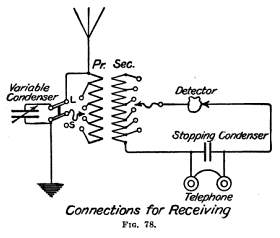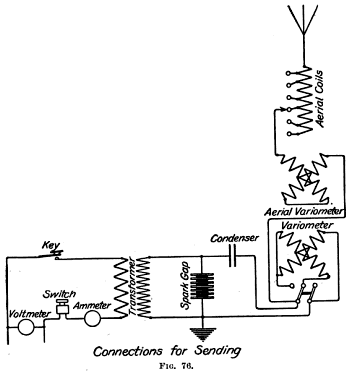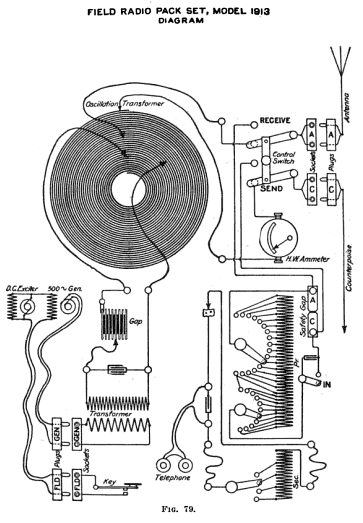1913 MODEL.
Radio pack set, model 1913, consists of the following units:
1 operating chest.
1 hand generator.
1 mast.
1 pack frames, set (3 frames).
1 tent.
Each unit contains component parts as follows:
Operating chest:
1 chest.
1 resonance transformer.
1 condenser.
1 oscillation transformer.
1 sending key.
1 spark gap.
1 hot-wire ammeter.
1 switch.
1 receiving set.
1 connecting cord for generator (4-conductor, with plugs).
1 connecting cord, with plug, for antenna.
1 double-head receiver.
1 test buzzer.
1 tool kit.
1 extra section for transformer secondary.
1 extra set crystals.
1 canvas case for receiver.
1 connector, 4-wire (lower half), generator.
2 connectors, 2-wire (lower half), antenna and counterpoise.
1 copy "Radiotelegraphy."
Hand generator:
1 generator.
2 cranks.
1 stand.
1 speedometer (carried in operating chest).
1 cap for speedometer opening.
1 canvas hoed.
Mast, type F. (Type D mast has 1 top, 1 bottom, 5 intermediate, and 3 extra sections)
1 top section.
1 bottom section.
8 intermediate sections.
4 intermediate sections, extra (3 for tent).
1 antenna.
1 counterpoise.
9 carriers, wire.
4 pins, antenna.
2 hammers.
1 set adapters for tent (4 pieces).
1 bag, antenna and counterpoise.
1 bag, accessories.
Pack frames, set:
3 frames (1 set). Each frame is complete with cincha, 2 cincha straps with rings and snap hooks, and 2 straps with snap hooks at each end.
Tent:
1 tent.
14 pins.
2 guy ropes.
1 insulating device.










